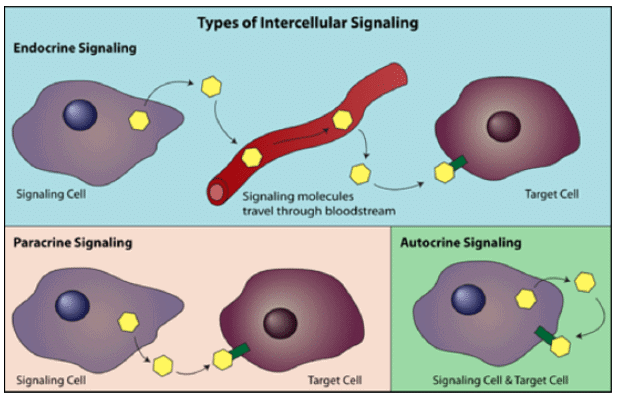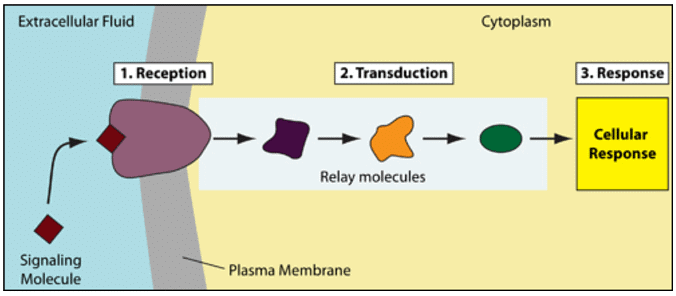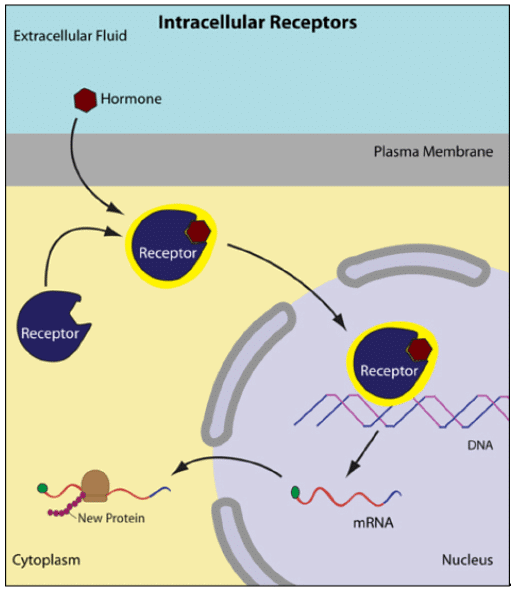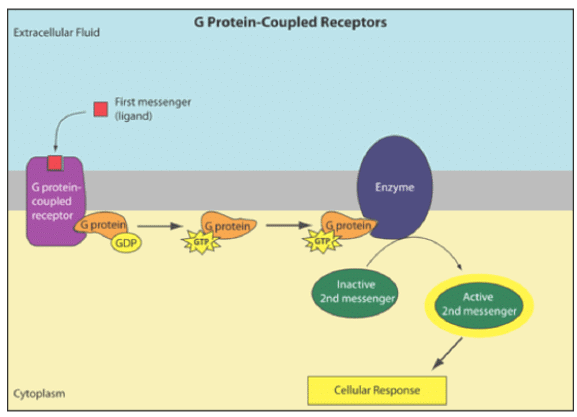UPSC Exam > UPSC Notes > Botany Optional for UPSC > Signal Transduction
Signal Transduction | Botany Optional for UPSC PDF Download
Description of Signal Transduction
- Signal transduction is a fundamental process in living organisms where signals from the environment or other cells are received and interpreted. These signals can take various forms such as light, heat, odors, touch, sound, or chemical compounds. Cells within an organism constantly communicate with each other through these signals, which serve essential roles in maintaining cell functions, promoting cell division, and driving cellular differentiation.
- These signals typically consist of chemical molecules present in the extracellular fluid surrounding cells. They can originate from distant parts of the body, known as endocrine signaling when hormones are involved, from neighboring cells in the vicinity (paracrine signaling), or even from the same cell that secreted them (autocrine signaling).

- The molecules involved in signaling can initiate a wide range of responses in the receiving cell. These responses may include altering the cell's metabolic activities or inducing changes in gene expression through transcription processes within the cell's nucleus, or sometimes a combination of both.
Overview of Cell Signaling
Cell signaling involves a series of distinct stages:
- Reception: In this initial stage, a cell perceives a signaling molecule originating from its external environment. The detection of this signal occurs when a chemical messenger, also known as a ligand, attaches to a receptor protein located on the cell's surface or within its interior.
- Transduction: Following the binding of the signaling molecule to its receptor, the receptor protein undergoes alterations that kickstart the process of transduction. Signal transduction typically involves a sequence of multiple steps, with each intermediary molecule within this pathway modifying the next molecule in line.
- Response: Ultimately, the signal sets off a precise cellular reaction, leading to a specific response within the cell.

Reception
- Membrane receptors operate by binding to the signaling molecule (ligand), which leads to the generation of a second signal, often referred to as a second messenger. This second messenger then triggers a cellular response. These types of receptors serve as conduits for transmitting information from the extracellular surroundings into the cell's interior. They achieve this by altering their shape or interacting with another protein when a specific ligand binds to them. Notable examples of membrane receptors include G Protein-Coupled Receptors and Receptor Tyrosine Kinases.

- Intracellular receptors, on the other hand, are situated within the cell, either in the cytoplasm or the nucleus of the target cell (the cell that is receiving the signal). These receptors are designed to bind with chemical messengers that are hydrophobic or exceedingly small in size (such as steroid hormones) and can traverse the plasma membrane unaided. Upon binding and activation by the signal molecule, the activated receptor can initiate a cellular response, which may involve altering gene expression.

Transduction
- In order to swiftly and effectively respond to minute concentrations of chemical signals, cellular signaling systems frequently employ complex, multi-step pathways. These pathways not only transmit the signal rapidly but also amplify it by involving numerous molecules at each step.
- One common mechanism in signal transduction pathways is the addition or removal of phosphate groups, which activates proteins. Protein kinases are enzymes responsible for transferring phosphate groups from ATP to proteins. Many of the intermediary molecules in a signal transduction pathway function as protein kinases and often act on other protein kinases within the pathway. This can lead to a series of phosphorylation events, where one enzyme phosphorylates another, subsequently leading to the phosphorylation of additional proteins, triggering a cascade of reactions.
- Another crucial aspect of the phosphorylation cascade involves a group of proteins called protein phosphatases. These enzymes play a role in rapidly removing phosphate groups from proteins through a process known as dephosphorylation, effectively deactivating protein kinases. Protein phosphatases serve as the "off switch" in the signal transduction pathway. It is vital to deactivate the pathway when the signal is no longer present to ensure proper regulation of the cellular response. Dephosphorylation also readies protein kinases for reuse, allowing the cell to respond to new signals.
- While kinases are essential components of signal transduction, cells also utilize small, water-soluble molecules or ions known as second messengers to relay signals received by cell surface receptors to target molecules in the cytoplasm or nucleus. These second messengers, such as cyclic AMP (cAMP) and calcium ions, facilitate the communication of signals within the cell.

Response
Cell signaling culminates in the control of one or more cellular processes. One common outcome of cell signaling is the regulation of gene expression, which involves either activating or deactivating the transcription of specific genes. Additionally, signaling pathways can regulate the activity of proteins, such as modulating the opening or closing of ion channels within the plasma membrane or facilitating changes in cell metabolism, such as catalyzing the breakdown of glycogen. These signaling pathways can also trigger significant cellular events, including cell division or apoptosis, which is a programmed mechanism for cell death.
The document Signal Transduction | Botany Optional for UPSC is a part of the UPSC Course Botany Optional for UPSC.
All you need of UPSC at this link: UPSC
|
179 videos|143 docs
|
Related Searches





















